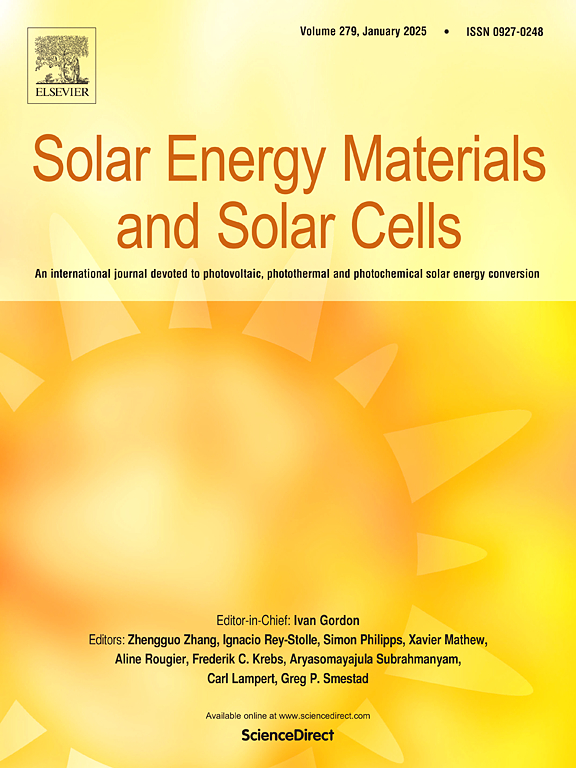Impact of laser-enhanced contact optimization on n-TOPCon solar cells' performance and efficiency: Experimental and simulated insights
IF 6.3
2区 材料科学
Q2 ENERGY & FUELS
引用次数: 0
Abstract
The laser-enhanced contact optimization (LECO) process, instead of the conventional high-temperature sintering process on the tunnel oxide passivated contact (TOPCon) solar cells, is being migrated to mainstream technology, with ongoing improvements in recent years. This study examines the impact of various process parameters—including sintering temperature, laser power, and reverse voltage—within the LECO process on the metallization-induced recombination current density associated with metal contact (denoted as J0,metal), contact resistivity (represented as ρc), and current-voltage (I-V) characteristics. On the basis of the experiment, COMSOL simulations were introduced to model the changes in charge carrier dynamics during LECO. The influence of laser power and reverse voltage on the front surface electron concentration was systematically investigated and confirmed. The findings indicated that appropriately reducing the sintering temperature can significantly decrease metallization recombination. At the same time, the open-circuit voltage (Voc) showed a negative correlation with both the laser energy and reverse voltage. Conversely, the fill factor (FF) and contact resistivity (ρc) positively correlated with these factors. Data from ρc and I-V measurements demonstrated that adequate laser energy is crucial for achieving sufficient carrier concentrations, which is necessary for minimizing ρc. However, excessively high laser energy may harm the passivation layer. Simulation analysis confirmed that the laser in the LECO process generates electron-hole pairs, while the reverse voltage separates the electrons and holes. We implemented the LECO process utilizing a sintering temperature of 790 °C, laser power of 18 W, and a reverse voltage of 16 V to enhance the maximum efficiency. (Eff) of 25.97 %, corresponding to a short-circuit current density (Jsc) of 42.05 mA/cm2, a Voc of 731.5 mV, and a fill factor (FF) of 84.42 %. The findings presented herein provide valuable insights that will inform the subsequent investigation of novel cell structures.
求助全文
约1分钟内获得全文
求助全文
来源期刊

Solar Energy Materials and Solar Cells
工程技术-材料科学:综合
CiteScore
12.60
自引率
11.60%
发文量
513
审稿时长
47 days
期刊介绍:
Solar Energy Materials & Solar Cells is intended as a vehicle for the dissemination of research results on materials science and technology related to photovoltaic, photothermal and photoelectrochemical solar energy conversion. Materials science is taken in the broadest possible sense and encompasses physics, chemistry, optics, materials fabrication and analysis for all types of materials.
 求助内容:
求助内容: 应助结果提醒方式:
应助结果提醒方式:


